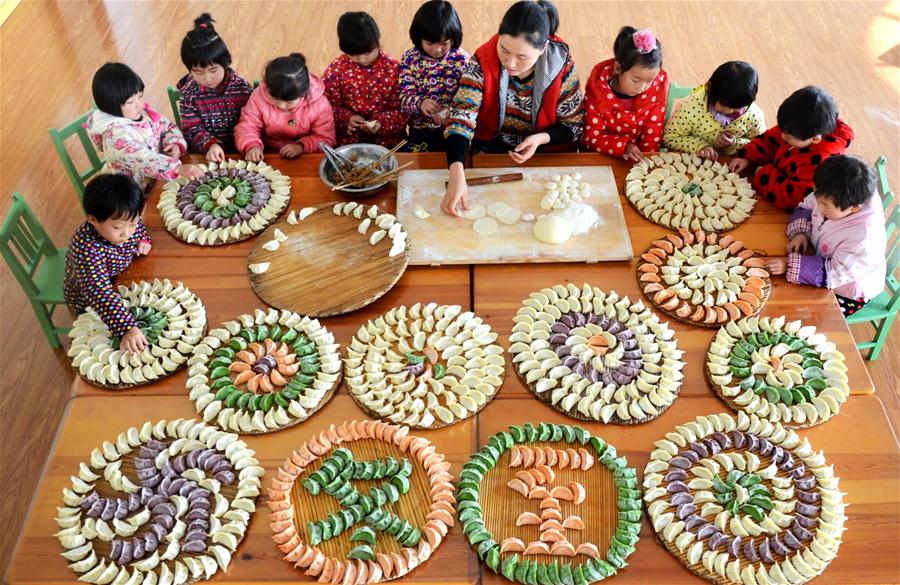China made great strides in protection of intangible cultural heritage in 2016

Kids learn to make dumplings at a kindergarten to celebrate the day of dongzhi, the 22nd of the 24 solar terms on the Chinese lunar calendar.
2016 experienced its share of significant events in regard to the protection of Chinese intangible cultural heritage, impressing inheritors, workers and experts across the country. For example, the “spirit of craftsmanship” was inscribed in the annual government work report for the first time, and the 24 solar terms were included in UNESCO’s Representative List of the Intangible Cultural Heritage of Humanity.
Training project
2016 marks the first year of China’s training project for the preservation of intangible cultural heritage. In January of 2016, the Ministry of Culture and Ministry of Education jointly started a project that allows masters of a particular skill to hone their skills through research and study at a set of universities and institutes, thus improving their ability to carry on their legacy.
The project focuses on the specific traditional crafts that help eradicate poverty and increase income. Inheritors and workers will improve basic skills, broaden their horizons, and lift cultural confidence and the capacity for sustainable development.
Revitalizing traditional crafts
The fifth Plenary Session of the 18th CPC Central Committee proposed to build an inheritance system for traditional Chinese culture in order to strengthen protection of cultural heritage and revitalize traditional crafts. In response, the Ministry of Culture along with departments nationwide began to seek measures in 2016.
A number of enterprises and institutes jointly set up five workshops for traditional crafts to help enterprises and craftsmen to address technical difficulties and improve the quality of products. They also offered advice in regard to branding, marketing and employment. Inheritors have already received batch orders for new products and more people have become involved in the cause.
Rescue records
Nearly 300 masters of intangible cultural heritage at the national level had passed away by the end of 2016, making it urgent to record their achievements. The Ministry of Culture started to record details of the rich knowledge and exquisite skills of 253 masters of intangible cultural heritage at the national level last year.
To ensure the quality of the records, the ministry compiled an operational guide. A national training class for recording this cultural information opened in September, including a variety of special subjects such as review collection, field investigation, oral history interviews as well as filming and post production.
24 solar terms
Among the cultural events in late 2016, nothing was more exciting than the inclusion of the 24 solar terms on UNESCO’s Representative List of the Intangible Cultural Heritage of Humanity.
The 24 solar terms are a historical and cultural legacy that has been carried on for generations. Compared with a specific item of intangible cultural heritage, the 24 solar terms are closer to a cultural phenomenon and school of thought. It has developed knowledge of time by observing the sun’s annual motion. Also, it has lessons for dealing with interpersonal and human-nature relationships, constituting wisdom regarding the existence and the philosophy of life.
Public involvement
It is roughly estimated that more than 800 showcases and promotional activities have been held across China in 2016 around the Day of Cultural Heritage which falls on the second Saturday in June every year, inviting all people to share the achievements in protecting intangible cultural heritage.
The popularity of the Documentary Masters in the Forbidden City and its film version lasted throughout 2016. It should be noted that Post-90s and Post-millennial generations were the driving force behind the instant online hit. Also, graduate and doctoral students from the Academy of Arts and Design of Tsinghua University, during the summer vacation, paid a return visit to the inheritors who had studied at their school. They streamed a live video of their “Treasure Exploration,” attracting more attention and support of items and masters of intangible cultural heritage.
